Vietnamese traditional dress is a reflection of the country’s rich cultural heritage and diverse history. From the graceful Ao Dai to the vibrant ethnic garments, each piece reflects a unique aspect of Vietnamese culture. These dresses have evolved over time but remain a symbol of identity and pride. In this article, let’s join Frontier Travel Vietnam to explore the beauty, history, and significance of Vietnam's traditional attire, and discover how these garments continue to influence modern fashion and cultural expression.

1. Ao Dai: The Quintessential Vietnamese Traditional Dress
History and Evolution
The Ao Dai, one of the most iconic examples of Vietnamese traditional dress, has deep historical roots. It evolved from the long tunics worn by the Vietnamese elite during the Nguyen Dynasty in the 18th century. The modern version of the Ao Dai emerged in the 1930s, thanks to designer Cat Tuong, who made the tunic more form-fitting and elegant by adding side slits and shaping it to enhance the wearer’s silhouette. Today, the Ao Dai continues to evolve while remaining a timeless symbol of elegance and Vietnamese cultural pride.
Design and Features
The Ao Dai is known for its slim-fitting, long tunic with high side slits that allow for graceful movement. Worn over loose trousers, this traditional Vietnamese dress features a high collar and long sleeves, often made from silk or other fine fabrics. The Ao Dai enhances the figure and exudes an air of sophistication. Designs vary from minimalist single-color outfits to more intricate patterns, often embroidered with traditional motifs such as flowers or dragons.
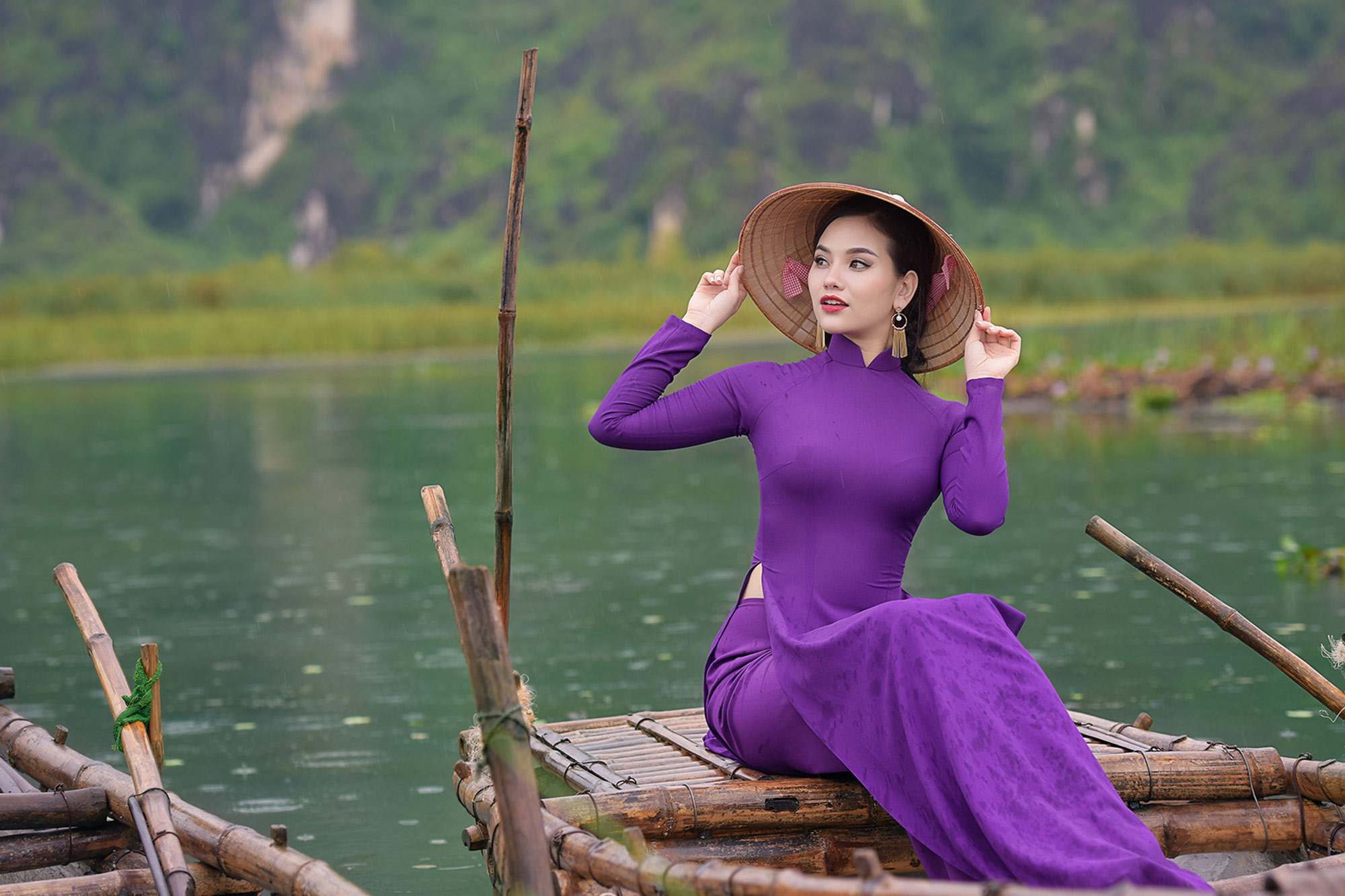
Cultural Significance
As a Vietnamese traditional dress, the Ao Dai is more than just clothing; it symbolizes the grace, beauty, and resilience of the Vietnamese people. It is worn for important cultural celebrations such as Tet (Lunar New Year), weddings, and festivals. Today, it’s also adopted as part of the school uniform for girls and is commonly worn by flight attendants, teachers, and professionals, embodying both tradition and modern elegance.
Ao Dai for Men and Women
Though the Ao Dai is often associated with women, it is also a popular Vietnamese traditional dress for men. The male version is typically less fitted and features a straight cut, worn over trousers. Men usually wear it for formal occasions such as weddings and religious ceremonies. While women’s Ao Dai are often colorful and intricately designed, the male version tends to be more understated, featuring solid colors like black, navy, or brown.
2. Ao Tu Than: The Four-Piece Vietnamese Traditional Dress
Historical Overview
The Ao Tu Than is one of the oldest and most traditional garments in Vietnam, specifically originating in the northern region, where it was commonly worn by women, especially in rural areas. This traditional Vietnamese dress dates back centuries and was a popular choice for women during the feudal era, long before the Ao Dai became prominent. It is known for its simplicity and practicality, making it ideal for everyday use, yet its beauty and elegance also made it a staple for special occasions and festivals. Today, while it is not worn as commonly in daily life, the Ao Tu Than remains an important cultural symbol and is often showcased in traditional performances and events.
Design Elements
The Ao Tu Than is named after its unique structure of four separate panels (Tu Than means “four bodies”). These panels consist of two at the front and two at the back, allowing the dress to flow freely and create a graceful silhouette. The dress is typically tied together with a colorful silk belt, known as a "Yem," worn underneath the outer layers. Traditionally, the Ao Tu Than is made from plain materials, reflecting the modest lifestyle of rural women, but wealthier individuals would use silk or embroidered fabrics. The front panels are often left open or loosely tied, creating a natural, flowing aesthetic that offers freedom of movement. The dress is usually accompanied by a Non La (conical hat) or Non Quai Thao, a variation of the hat with silk ribbons tied under the chin.
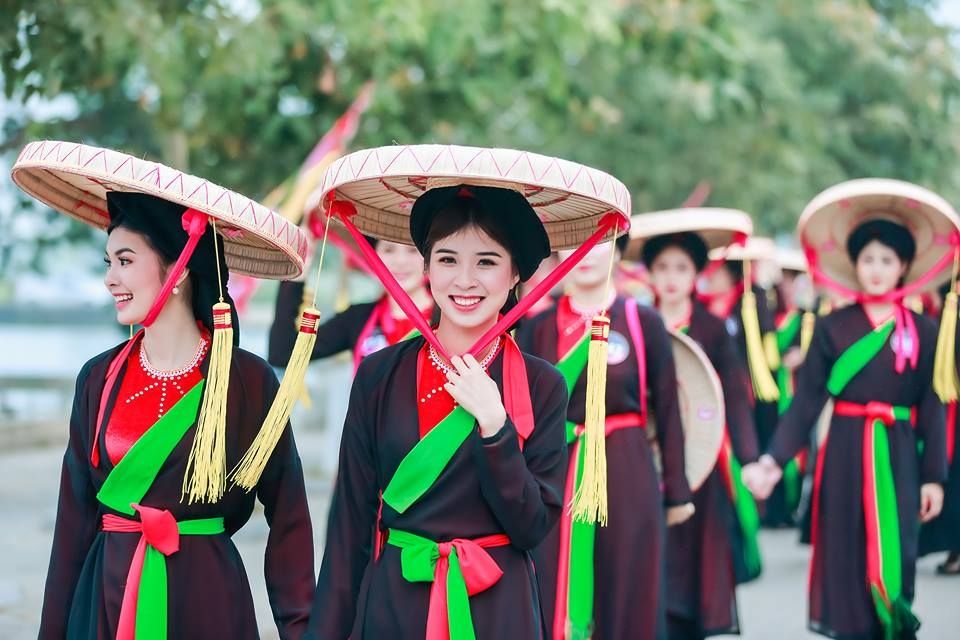
Occasions for Wear
Although the Ao Tu Than was once worn regularly in northern Vietnam, its use today is mainly reserved for traditional festivals, cultural events, and performances. The dress is often seen during Tet celebrations, village festivals, and Quan Ho folk singing performances—a popular form of traditional music from northern Vietnam. It is also a popular choice for weddings in rural areas, where the bride may wear the Ao Tu Than to honor her cultural roots. Additionally, the dress often appears in theater and dance performances that celebrate Vietnamese history and folklore, symbolizing the elegance and grace of rural women from past generations.
3. Non La: The Iconic Vietnamese Conical Hat
Origin and Function
The Non La is a well-known symbol of rural Vietnam, widely recognized for its unique conical shape. It is much more than just a fashion accessory; it has long served as a practical item, offering protection from the harsh sun and rain, making it indispensable for farmers and workers in Vietnam’s rice paddies and fields. Historical records and ancient carvings show that the Non La has been worn in Vietnam for over 2,000 years. Traditionally woven from palm leaves or bamboo, this Vietnamese traditional hat is both lightweight and durable, ideal for the country’s tropical climate. In addition to its functional uses, the Non La holds significant cultural value, representing the simplicity and hardworking spirit of rural Vietnamese life.
Cultural Importance
Beyond its practical purposes, the Non La is a symbol of Vietnam’s agricultural heritage and is deeply ingrained in the country’s culture and daily life. It is often seen paired with traditional clothing like the Ao Dai or Ao Tu Than, completing the classic image of a Vietnamese woman with grace and modesty. The Non La also appears frequently in Vietnamese art, literature, and poetry, where it is celebrated for its beauty and its connection to the rural countryside. In Vietnamese folklore, the Non La is often associated with purity, simplicity, and the nurturing roles of women, as it is commonly worn by mothers and grandmothers working in the fields or markets. Today, it is a popular souvenir and an enduring icon of Vietnamese culture, worn in cultural festivals, performances, and even as part of modern fashion statements.

Varieties
Though the Non La has a basic conical design, there are regional variations that give it unique qualities depending on where it is made. For example, in Hue, the former imperial capital, a special version called the Non Bai Tho (poetry hat) is crafted. This version often has intricate patterns or poems pressed between layers of the palm leaf, which are visible when held up to the light, adding an artistic and poetic dimension to the hat. In southern Vietnam, Non La hats tend to be wider and flatter, providing more shade from the sun, while in northern regions, they may be more pointed and compact. The materials used also vary; some are woven from palm leaves, while others may include bamboo or rattan for extra sturdiness. Each region brings its own artistic touch to the Non La, making it not only functional but also a cherished cultural artifact.
4. Ao Ba Ba: Southern Vietnam’s Simple Attire
Overview and Use
The Ao Ba Ba is a traditional garment widely worn in southern Vietnam, particularly in the Mekong Delta region. This comfortable outfit consists of a loose-fitting top and matching trousers, making it ideal for the hot and humid climate of the south. The design is straightforward, often featuring a button-down front or a simple tie closure, and is typically made from lightweight cotton or silk fabric. The Ao Ba Ba allows for ease of movement, making it a practical choice for daily activities, whether working in the fields, attending local markets, or engaging in traditional crafts. While it may appear simple, the Ao Ba Ba's functionality and comfort make it a beloved choice for many women and men in rural areas.
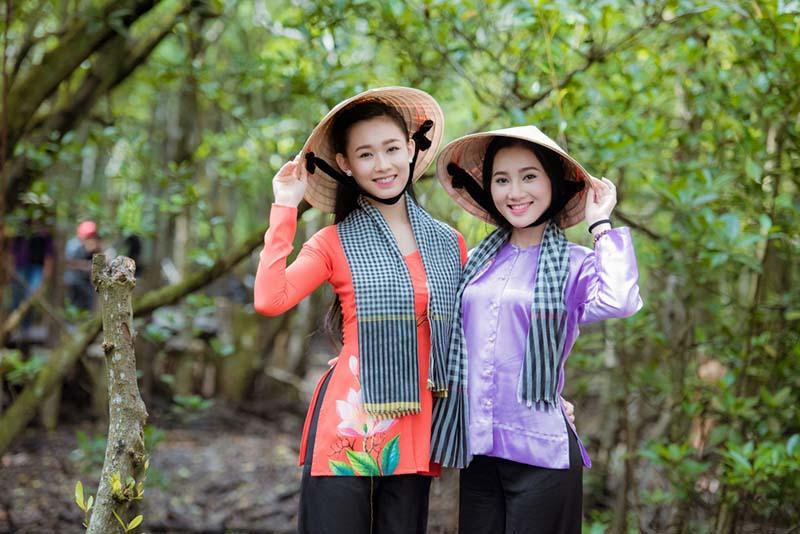
Symbol of Simplicity
The Ao Ba Ba embodies the spirit of simplicity and practicality in southern Vietnamese culture. Unlike more elaborate traditional dresses, the Ao Ba Ba reflects an understated elegance that resonates with the lifestyle of the Mekong Delta's inhabitants. Its straightforward design is often adorned with vibrant colors or patterns, allowing wearers to express their personality while maintaining a sense of cultural identity. This traditional attire has become synonymous with the Mekong Delta, representing the region's agricultural roots and the down-to-earth nature of its people. The Ao Ba Ba is often worn during local festivals and family gatherings, where its comfort allows for ease in movement, enhancing the joy of social interactions and celebrations. As a symbol of southern simplicity, the Ao Ba Ba serves as a reminder of the values of community, hard work, and connection to the land that define the Mekong Delta lifestyle.
5. Hmong and Other Ethnic Minority Traditional Attire
Diversity of Ethnic Dress
Vietnam is home to 54 ethnic groups, each with its own unique culture, traditions, and clothing styles. The traditional attire of ethnic minorities, such as the Hmong, Tay, Dao, and others, showcases the incredible diversity of Vietnamese traditional dress. These outfits vary greatly in design, color, and material depending on the group and region, but all are deeply tied to the history and customs of their people. Among the most recognizable is the clothing of the Hmong, characterized by vibrant colors and intricate patterns, particularly in the northern mountainous regions. The Tay and Dao also wear distinctive garments that reflect their connection to nature, agriculture, and spiritual beliefs. These traditional outfits are not only worn during festivals and ceremonies but are also part of daily life in many rural ethnic communities.
Unique Features
Ethnic minority attire is celebrated for its intricate craftsmanship, with hand-stitched embroidery and woven patterns that often carry symbolic meaning. The Hmong, for example, are known for their elaborate embroidery work, which features floral, geometric, and animal motifs, each representing elements of their folklore or religious beliefs. Their clothing is typically layered, consisting of brightly colored skirts, vests, and aprons, often made from hemp or indigo-dyed cotton. Silver jewelry is a key accessory for many groups, with the Hmong and Dao women often adorning themselves with heavy silver necklaces, bracelets, and earrings, which are believed to bring prosperity and ward off evil spirits. The Dao women also wear distinctive headpieces, often wrapped in red fabric and decorated with tassels, beads, or coins, symbolizing their connection to ancestral traditions. Each ethnic group has its own unique set of clothing that acts as a canvas for cultural expression, with designs that are passed down through generations.
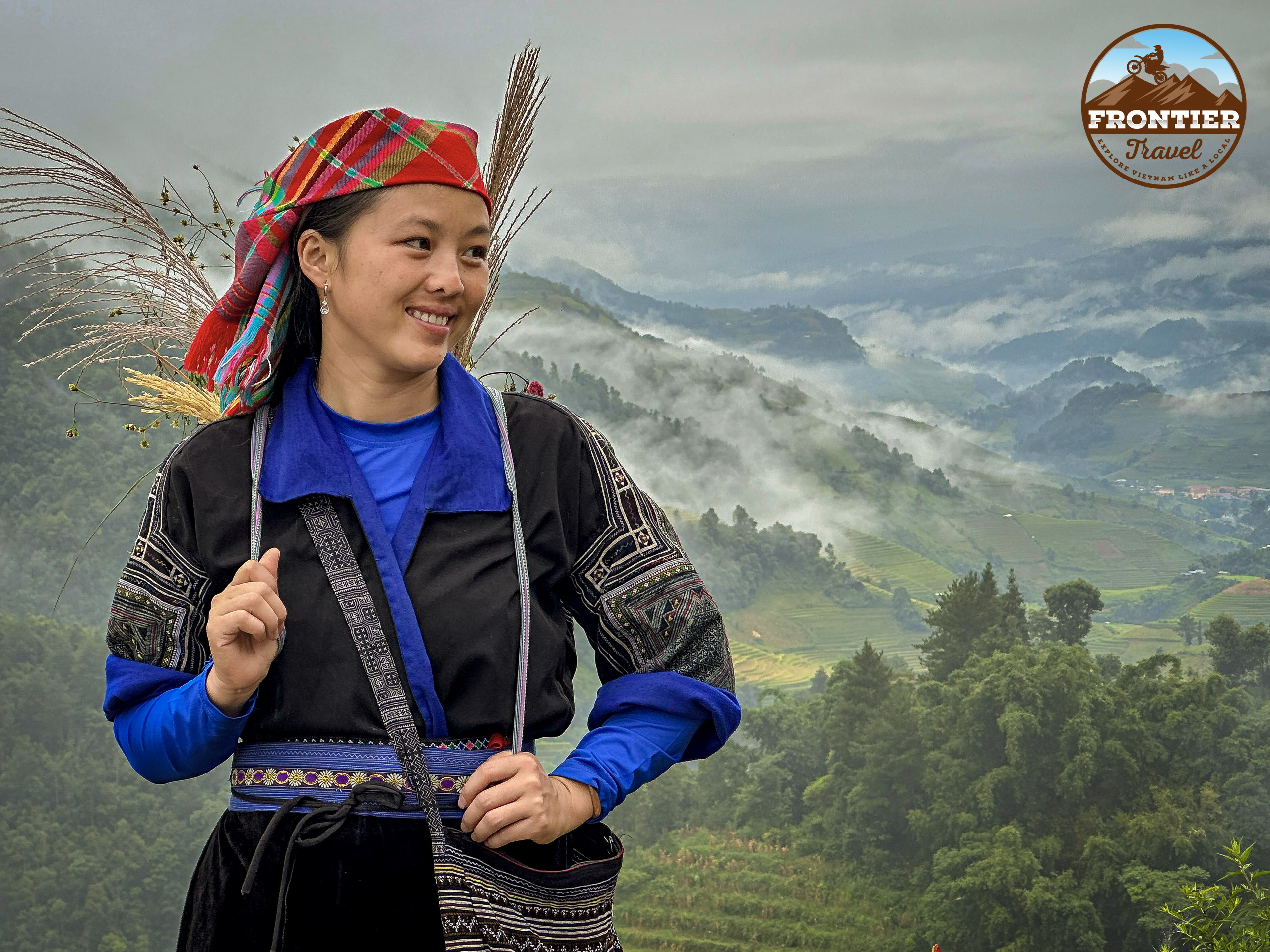
Cultural Expression
Traditional ethnic clothing is much more than just a practical outfit; it is a powerful form of cultural expression. The vibrant colors and patterns used in these garments often reflect the values, beliefs, and social status of the wearer. For example, the Dao’s red headpieces are not just decorative but are also symbols of their clan heritage, while the Hmong’s intricate skirts tell stories of their ancestors’ journeys. These traditional clothes are often worn during festivals, weddings, and ceremonies, where they play a key role in ritual practices and community identity. By preserving these clothing traditions, ethnic minority groups continue to maintain a deep connection to their history, customs, and spiritual beliefs, ensuring that their unique cultural identities are passed onto future generations. Each stitch, pattern, and accessory serves as a reminder of the group’s resilience and their contribution to Vietnam’s rich cultural tapestry.
Vietnamese traditional dress beautifully encapsulates the country's diverse cultural heritage, from the graceful Ao Dai to the functional Ao Ba Ba. Each piece reflects the identity and traditions of the Vietnamese people, while ethnic minority attire highlights intricate craftsmanship and rich customs. As these styles continue to evolve, they inspire modern fashion and celebrate the nation’s history. Discover the significance of Vietnamese clothing with Frontier Travel Vietnam, where each garment tells a unique story.





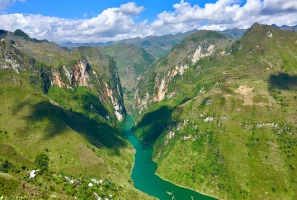

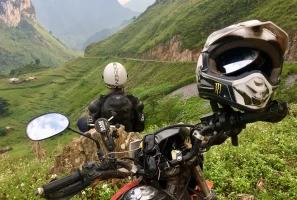

.png)